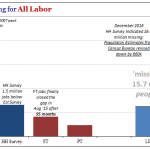
Earlier this month, I wrote that tax-free closed-end bond funds were ripe for the picking, and this is still the case today. In my income-driven newsletter Peak Income, we currently have three open recommendations yielding a fat, tax-free 6%.
But, as nice as tax-free income can be, the world of closed-end funds (“CEFs”) is much wider. There are CEFs that invest in taxable bonds… stocks… REITs… commodities… There are even CEFs that do nothing but invest in other CEFs.
So today, we’re going to take a look at some of these different fund types, and examine their pricing after the post-Trump bond yield spike. I covered muni funds in my last article, so let’s start with their taxable cousins.
That 90-Cent Dollar: Investment-Grade Taxable Bond Funds
The taxable bond fund space tends to be one of the largest and most actively traded, and there are good reasons for that. Because CEFs juice their returns with borrowed money, it makes sense to use lower-volatility investments like bonds. When the investments in question don’t fluctuate in value all that much, you can more safely add juice to the portfolio via leverage.
Bonds are also fairly illiquid and don’t trade all that regularly. So, by putting a portfolio of bonds into a CEF, you effectively convert illiquid assets into something that’s a lot easier and cheaper to buy and sell.
Taxable bond ETFs generally trade at a slight discount to NAV, but at times those discounts can get extremely wide, which is generally the best time to buy them. This is the time when you can get that elusive 90-cent dollar.
Right now, you can take your pick of investment-grade bond CEFs trading at discounts to NAV of 8%-10%, or even more, and sporting dividend yields well in excess of 6%.
In this bond market, that’s not half bad.
Fed Proof: Loan Funds
You’re probably aware of how the mortgage market works. The bank that made your mortgage loan probably didn’t hang onto it. It’s far more likely that they sold it to Fannie Mae or to some other institutional investor who, in turn, lumped it together with thousands of other loans and turned it into an investment product.













Leave A Comment